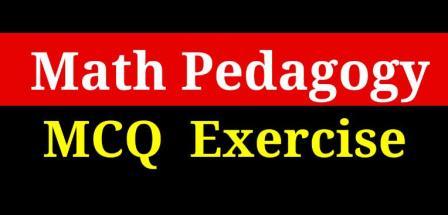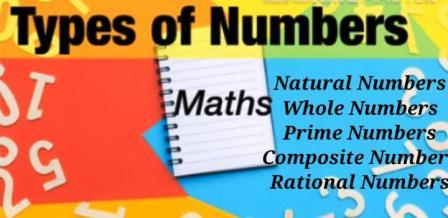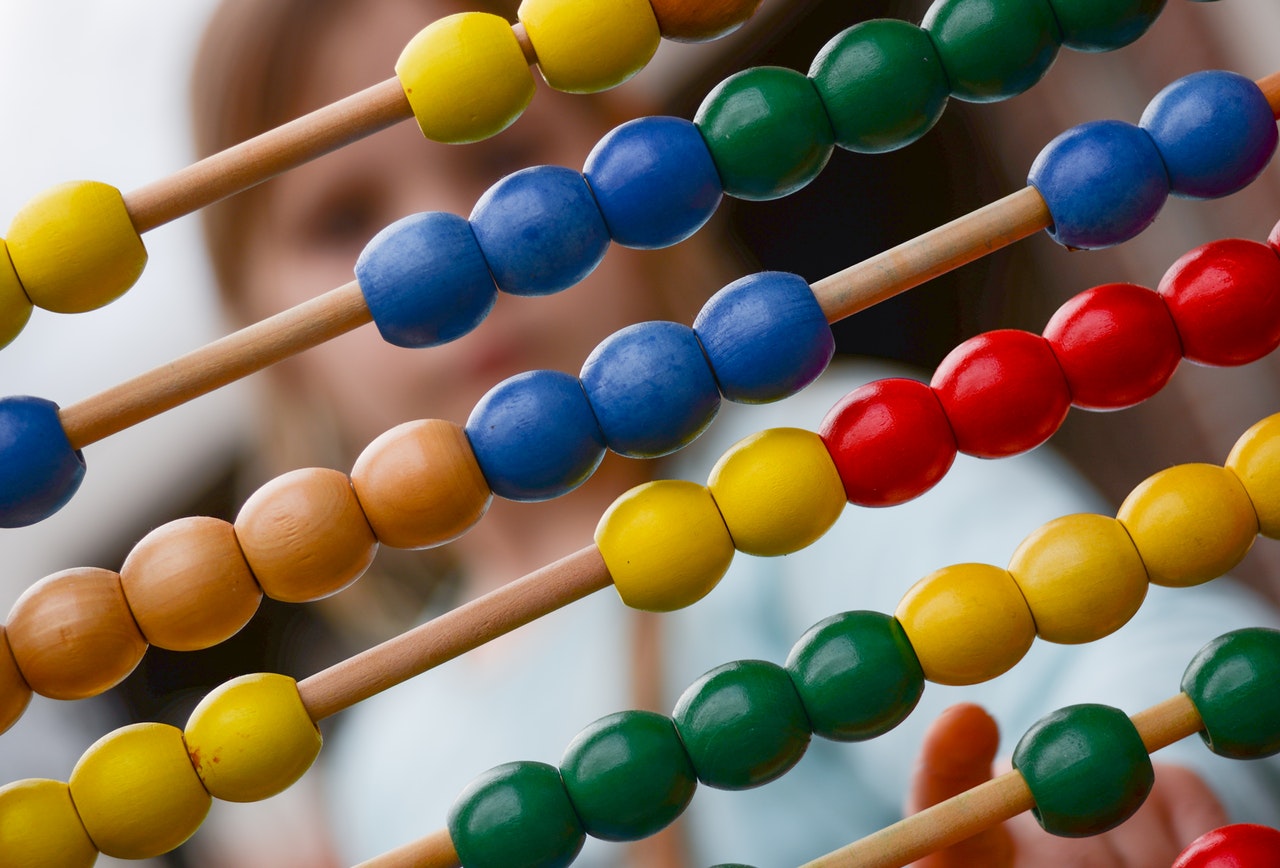
In this following section of Math Pedagogy Questions – MCQ Exercise Set-2 for CTET, HTET, RTET, UPTET, and other TET exams, 30 questions (MCQ) with 4 choices are given. Choose the right answer for each question. Answer of these important Math Pedagogy questions are available in the last of this post. Check how many of your answers are correct.
Read – Math Pedagogy MCQ Exercise Set-1 for CTET & TET
Math Pedagogy Questions – MCQ Exercise Set-2
1- Which of the following can be used as learning resources for visually challenged in Mathematics classroom?
a) Taylor’s abacus, fraction kit, number chart
b) Number chart, computer, geoboard
c) Taylor’s abacus, computer, geoboard
d) Computer, number chart, geoboard
2- “Errors play an important role in Mathematics” This statement is
a) false, as there is no scope of errors in Mathematics
b) false, as errors indicate careless
c) true, as they give ideas about how children construct Mathematics concepts
d) true, as they give feedback to students about their marks
3- Which of the following method is based on principles of “Watch, listen and learn”?
a) Laboratory Method
b) Demonstration Method
c) Lecture Method
d) Research Method
4- The inductive method of Mathematics teaching is based on the principle
a) from unknown to unknown
b) from unknown to known
c) from general to particular
d) from particular to general
5- Manipulative models, static pictures, written symbols, spoken and written language, real world situations or context are five ways to represent
a) mathematical thinking and ideas
b) geometrical proof
c) mathematics curriculum
d) mathematical vocabulary
6- The devices which are used to make teaching methods more effective are known as
a) objectives of teaching
b) principles of teaching
c) techniques of teaching
d) All of the above
7- Evaluation is closely related with
a) content
b) evaluation strategies
c) objectives
d) process of learning
8- Which type of evaluation has main purpose to give ‘feedback’ to the students?
a) Formative evaluation
b) Diagnostic evaluation
c) Summative evaluation
d) Prognostic evaluation
9- A child who is able to perform all number operations and is able to explain the concept of fractions is at
a) partition phase
b) operational phase
c) emergent phase
d) quantifying phase
10- Formative assessment in Mathematics at primary stage includes
a) identification of learning gaps and deficiencies in teaching
b) identification of common errors
c) testing of procedural knowledge and analytical abilities
d) grading and ranking of students
EVS MCQ Exercise Practice Set-1 for CTET & TETs
11- If Intelligence Quotient of a student is 100, it means that
a) the student is genius
b) intelligence level of the student is maximum
c) mental age of the student is more than chronological age
d) mental age of the student is same as the chronological age
12- Most appropriate formative task to assess the students’ understanding of data analysis is?
a) quiz
b) role play
c) crossword
d) survey based project
13- If student writes ‘five thousand fifty’ as ‘550’, it means
a) concept of place value is not clear
b) does not have knowledge of numbers
c) does not have knowledge of Mathematics
d) does not know addition
14- Which of the following statements is not true about ‘mapping’ in Mathematics?
a) Mapping strengthens spatial thinking
b) Mapping promotes proportional reasoning
c) Mapping is not a part of Mathematics curriculum
d) Mapping can be integrated in may topics of Mathematics
15- Mathematical communication refers to
a) ability to consolidate and organise mathematical thinking
b) ability to solve problems
c) skills to participate in Mathematics quiz
d) ability to speak in Mathematics classroom
16- Which of the following is not an objective of teaching Mathematics at primary level according to NCF, 2005?
a) Preparing for learning higher an abstract Mathematics
b) Making Mathematics part of child’s life experiences
c) Promoting problem-solving and problem posing skills
d) Promoting logical thinking
17- According to the NCF, 2005 which one of the following is not a major aim of Mathematics education in primary schools?
a) To Mathematise the child’s thought process
b) To relate Mathematics to the child’s context
c) To enhance problem-solving skills
d) To prepare for higher education in Mathematics
18- As per the NCF 2005, the narrow aim of teaching Mathematics at schools is to
a) teach daily life problems related to linear algebra
b) develop numeracy related skills
c) teach algebra
d) teach calculation and measurement
19- NCF 2005 emphasizes that
a) Maths shall be taught to selective students
b) succeeding in Mathematics should be mandatory for every child
c) students should be tested first for their logical mathematical ability
d) Maths curriculum shall be separate for low achievers
20- When faced with word problems, Rajan usually asks “should I add or subtract.” “Should I multiply or divide?” Such questions suggest
a) Rajan cannot add or multiply
b) Rajan seeks opportunities to disturb the class
c) Rajan has problem in comprehensing language
d) Rajan lacks understanding of number operations
Famous Major Newspapers of the World
21- ‘Mathematics puzzles’ at primary level help in
a) identifying brilliant students of the class
b) providing fun to students
c) testing problem-solving skills
d) promoting problem-solving skills
22- To introduce the concept of fractions a teacher can begin with
a) identifying numerators and denominators of different
b) finding fractions on a numbers line
c) writing fractions in the form of a/b where b is not equal to 0
d) identifying the fractional part of things around them
23- The nature of Mathematics is
a) ornamental
b) logical
c) difficult
d) not for common
24- Most appropriate strategy that can be used to internalize the skill of addition of money is
a) use of models
b) role play
c) solving lots of problems
d) use of ICT
25- To be a “good” mathematician one must be able to
a) master the techniques of answering questions
b) memorize most of the formulae
c) solve the problem in no time
d) understand, apply and make connection across all the concepts
26- Oral examples help to develop which power in pupils?
a) Thought
b) Logic
c) Imaginations
d) All of the above
27- Success in developing values in mainly dependent upon
a) government
b) society
c) family
d) teacher
28- The main goal of Mathematics education is
a) to formulate theorems of Geometry and their proofs independently
b) to help the students to understand Mathematics
c) to develop useful capabilities
d) to develop children’s abilities for mathematization
29- Which work is not related with a teacher?
a) Planning
b) Guidance
c) Teaching
d) Budgeting
30- Most of use of Mathematics done in the activities of human life, that is?
a) cultural
b) psychological
c) social
d) economical
Biology Questions for Competitive Exams
Answers of above Math Pedagogy Questions – MCQ Exercise Set-2
1(a), 2(c), 3(b), 4(c), 5(a), 6(c), 7(c), 8(a), 9(b), 10(a), 11(d), 12(d), 13(a), 14(c), 15(a), 16(a), 17(d), 18(b), 19(b), 20(d), 21(d), 22(d), 23(b), 24(b), 25(d), 26(d), 27(d), 28(d), 29(d), 30(d)
You may use ‘comment section’ below for your valuable comments/feedback.

